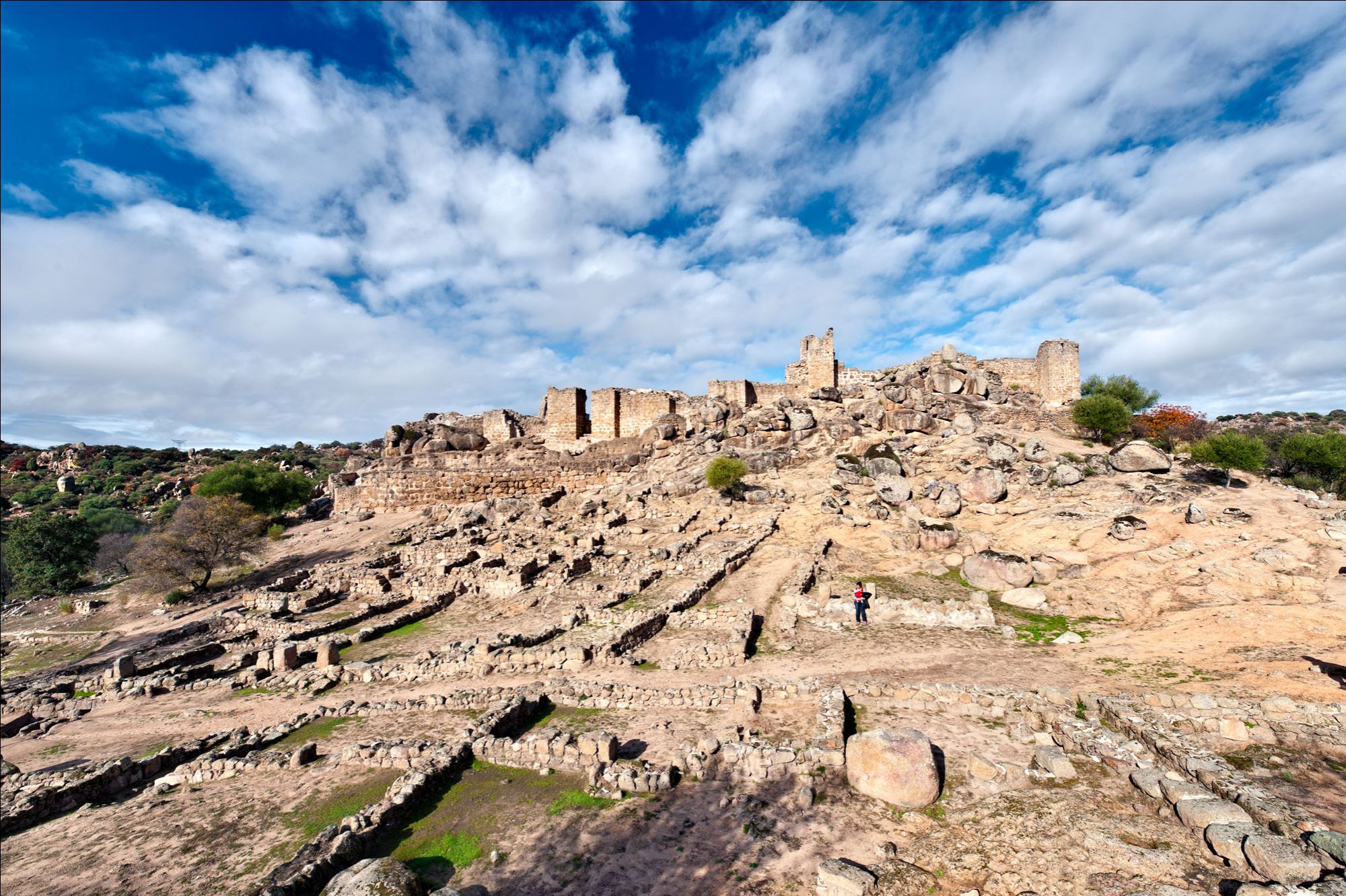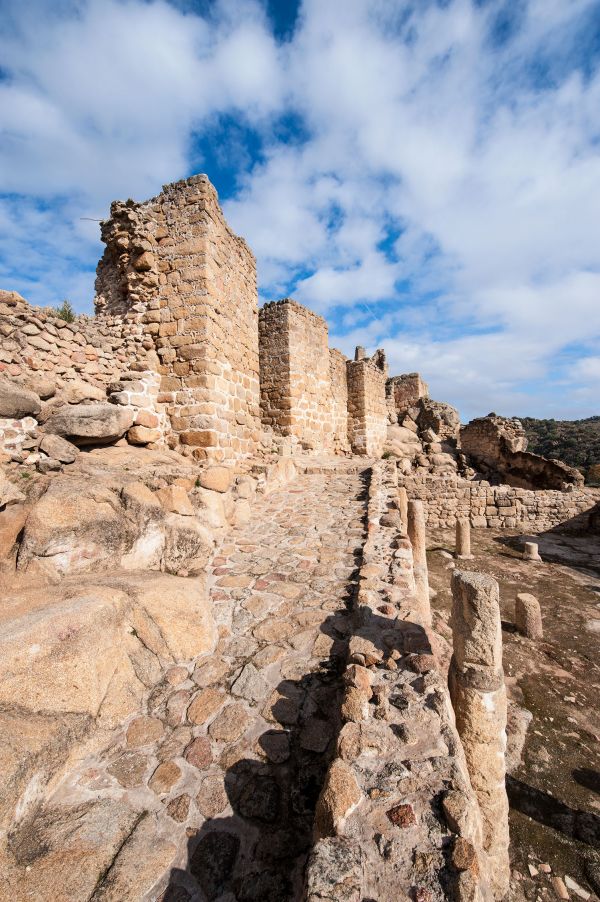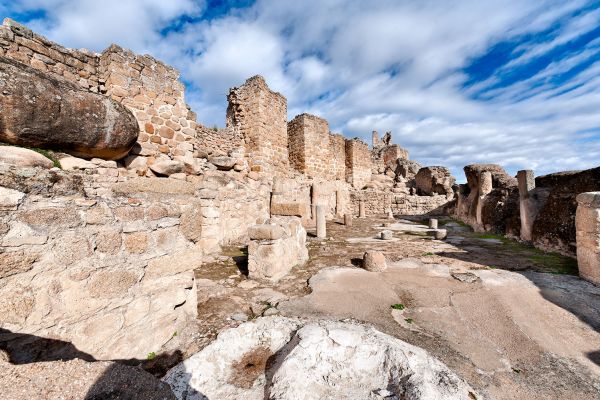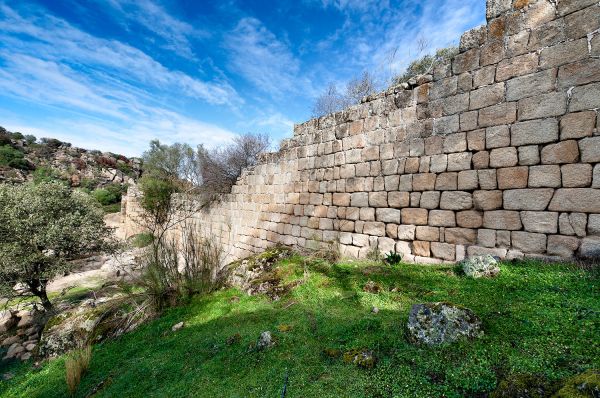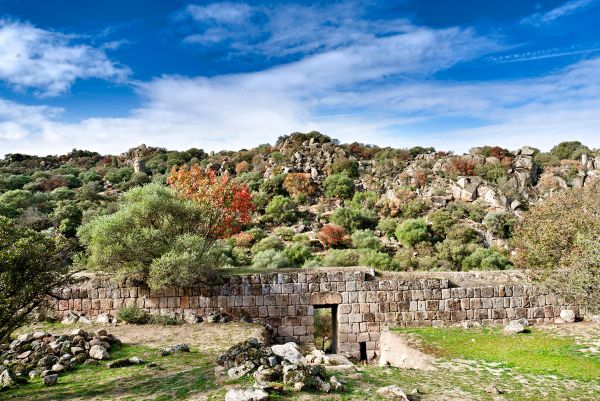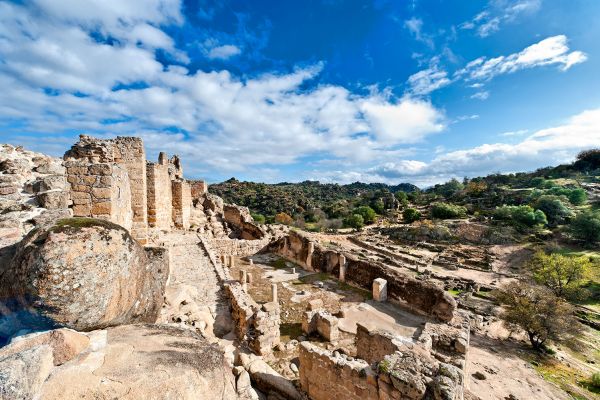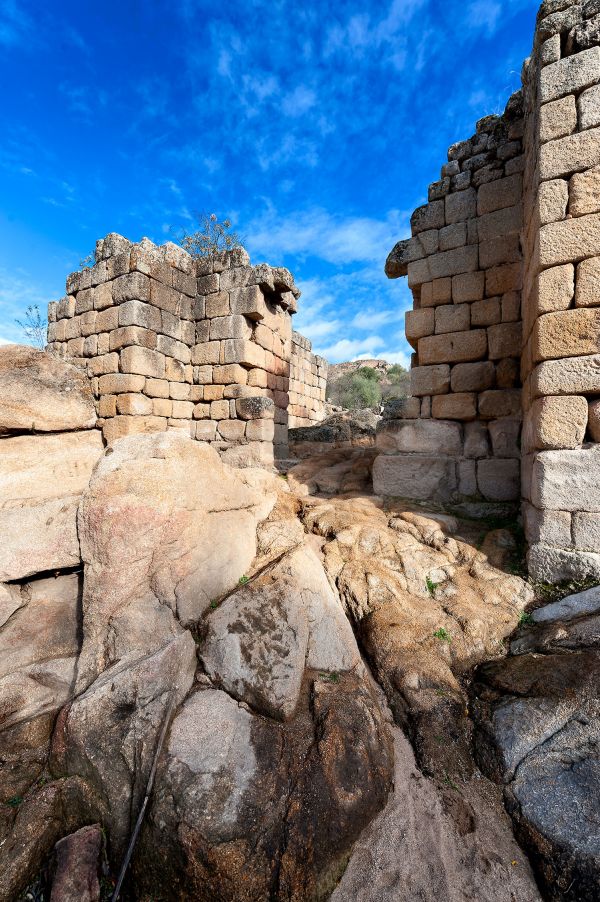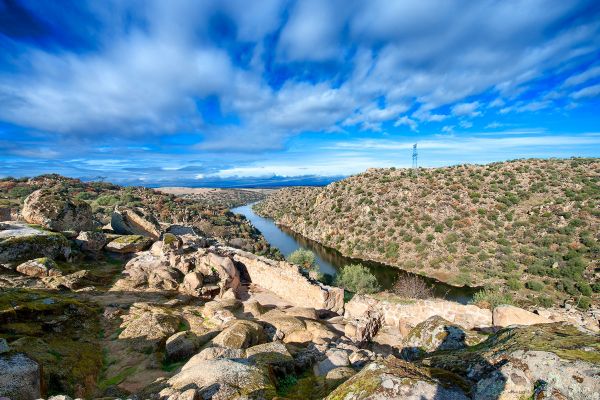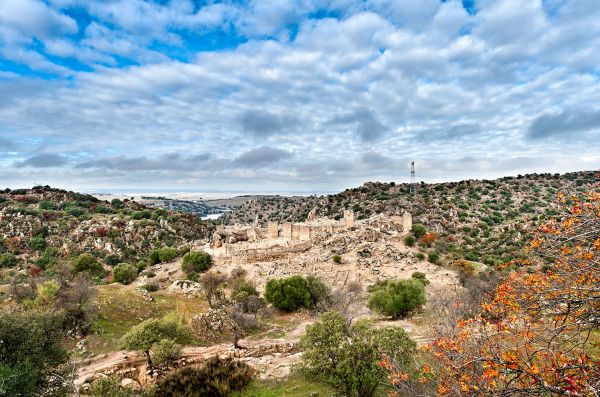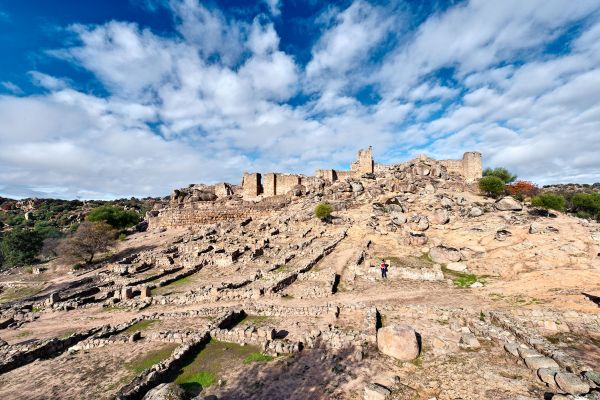Ciudad de Vascos, a fragment of the past
Toledo
“That’s how the great explorers must have felt when they discovered a remote, hidden place,” you might think, when first arriving in the city of Vascos. A sensation that remains even on your second visit. And on the third. It never stops surprising you.
Visiting Vascos is like entering a portal to the past, and the Islamic presence in the Iberian Peninsula.
We are in the western foothills of the Toledo mountains, almost in Cáceres, 5 km to the east of Navalmoralejo, at the foot of the Ancha and Aguda ranges.
Access is difficult, first via roads, then through a bumpy dirt track. However, as we draw nearer, the landscape is beautiful and wild, a real spectacle in spring: almond trees, holm oaks, junipers and wild olive trees inhabit the stark rock formations that carve out the Huso river.
In the middle of the rugged terrain, we get our first taste of what is to come: some defensive remains, around 3 km, which circle an 8-hectare surface area. Outside, we see ruins of a suburb and two cemeteries, some tanneries and some bathrooms. Inside the walls, a whole urban network with blocks of homes, sewage, souks, mosques, stores, etc., and in the background, overlooking everything from a rocky promontory, hanging above the river, the citadel.
Ciudad de Vascos is the paradigm of what a medina –or city– from al-Ándalus was between the 9th and 12th centuries, when it was inhabited.
Almost everything else about its history is a mystery. The question of why this place was chosen, when it was founded, when it was abandoned and of course, even the origin of its current name or its old name - almost everything - is subject to many different theories.
It is known that in this zone, there was a territory called Basak (Vascos) and it had a city called Nafza, where members of a Berber tribe of the same name were settled. It is thought that this city is the current abandoned city and that, after being depopulated, the original name of the city was forgotten, but not the name of its territory, which ended up being linked to it.
The Nafza people rose up against Abderramán III –the first Umayyad caliph of Córdoba– who sent troops in 932 to quash the rebellion. Vascos was perhaps founded at this time, with the aim of quelling the Nafzas and strengthening the border with the Christian kingdoms.
However, the Caliphate soon fragmented into Taifa kingdoms. Not long after, in 1085, Alfonso VI of Castile conquered Toledo and Castilian troops occupied Vascos. The Taifa of Seville and Badajoz then asked for help from the Almoravides of north Africa, who overcome the Castilian king in the battle of Sagrajas (1086), meaning that the Tajo valley, the Jara and Talavera zone, once again became border lands and depopulated. The Vascos inhabitants abandoned the city, which fell into oblivion.
One of the most important features of the archaeological site is the good preservation of the walls and citadel, which comprises an important defensive complex. Entering its gates, we walk along streets which were once home to souks, mosques, stores, etc. and get a slice of daily life, public and private, of the people, potters and blacksmiths, tanners and soldiers who once lived in the city. The water system complex that channelled the mountain springs through streams to feed a reservoir and a large trough near the town is noteworthy. Indeed, we see the remains of a public bath that used these waters and an advanced sewer system.
The "Ciudad de Vascos" interpretation centre is in Navalmoralejo.
Highlights
Can be visited on Saturday mornings, from 16 May to 31 January.
Closed the rest of the year.
May also be of interest to you
Castilla-La Mancha Tourism in 2023. All rights reserved.
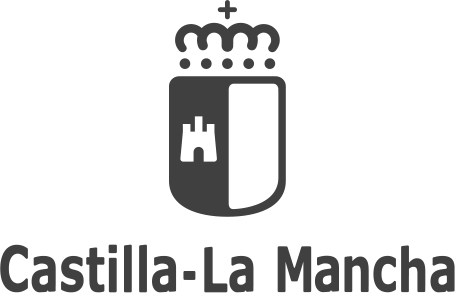
 365
365
